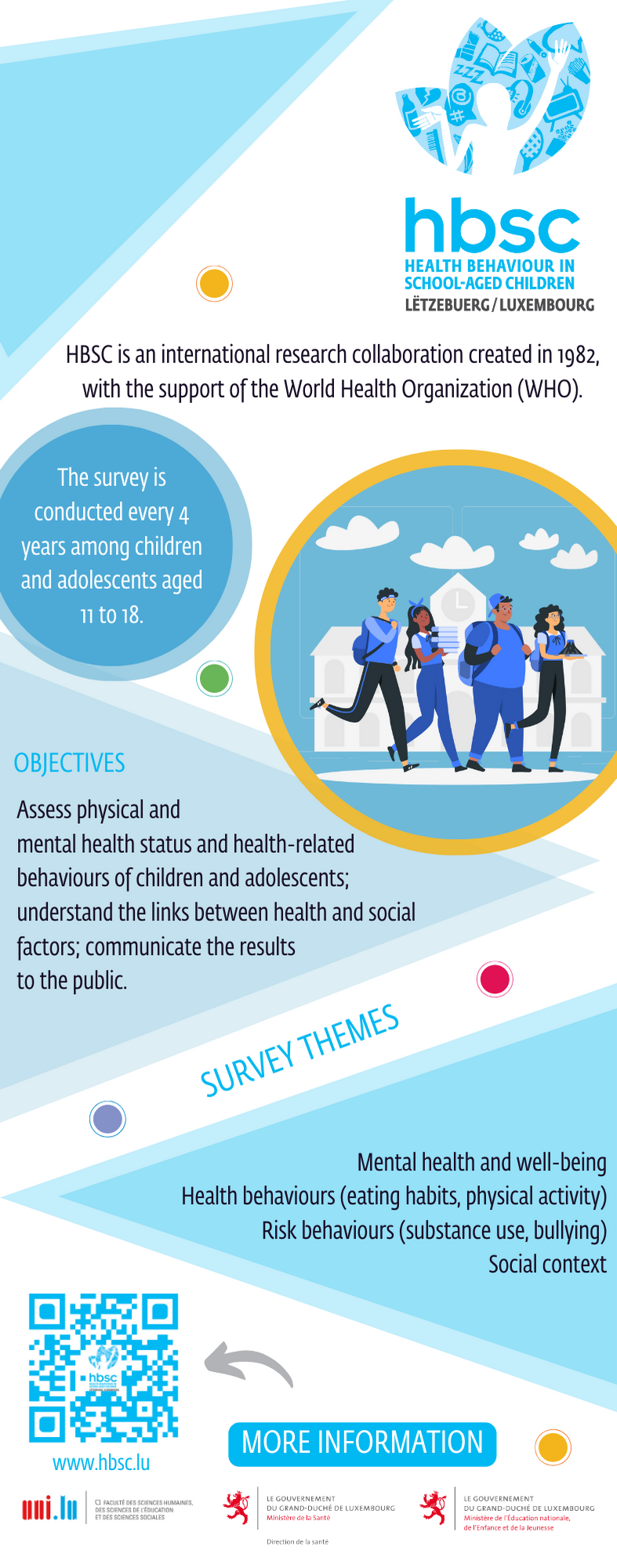The goal of the HBSC survey is to evaluate the children and adolescent’s well-being, health status and health-related behaviours, to understand the relationship between health and social factors and to communicate the results to the public.
At the international level, the HBSC survey includes a sample size of more than 200 000 students aged 11, 13 and 15 years old, from 51 countries and regions in Europe, North America and Asia. The survey is repeated every four years, with identical questions in each period, allowing to follow the changes over the time. The HBSC survey is jointly elaborated by the researchers from the different countries in order to collect data that is internationally comparable.
The HBSC survey measures:
– Socio-demographic characteristics (a.o. age and gender) and socio-economic environment;
– Subjective health (a.o. self-rated health), health complaints, body image and life satisfaction;
– Eating behaviours, diets, and overweight;
– Dental health;
– Injuries;
– Bullying and involvement in fights;
– Physical activity;
– Family and peer relationships;
– School environment;
– Sexual behaviour (only for students from secondary schools);
– Use of intoxicating substances: alcohol, tobacco and cannabis.
This topic selection aims to analyse the physical and mental health status of young people in today’s society as well as their health behaviours. With these findings, measures to promote health can be developed to best fit the student’s needs. It is important to act at an early stage because the underlying behaviours for a healthy life start and consolidate during childhood and adolescence.
For more information about the HBSC International Network: https://hbsc.org/

